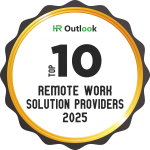
Interview with Anita Füzi
Anita either works as a flexible workspace and coworking consultant, helping the creation of new collaborative workspaces all around the globe, or as a researcher, nourishing her practitioner work with most recent scientific data, or involved in both at the same time.
In the past, she had worked on urban innovation and social innovation projects at Limitless, a Luxembourg-based innovation consulting company, and had managed innovation and business creation projects at the European Institute of Innovation and Technology (Health KIC). Most recently she has been supporting Cowork7/24, the booking.com of coworking spaces, in their strategic decision making and product development. Before putting his academic research in practice, she had worked at MIT, Cardiff Metropolitan University, TU Wien, and Széchenyi István University.
She often speaks at international conferences, including Coworking Unconference Asia and ISPIM Innovation Conference.
1. Can you tell us why did you choose coworking as a research topic?
I first heard the term “coworking” in 2013 when I was a visiting researcher at Cardiff Metropolitan University (Cardiff, UK). My research at the time focused on open innovation ecosystems and how small- and medium-sized businesses can benefit from collaborations formed in such ecosystems. I was about to finish my 6-month research period, and one day the professor I worked with came to me and asked whether I had heard about coworking spaces. When I said no, he told me what coworking is, and explained to me how and why such spaces – which are all about community, collaboration, and networking in beautifully designed offices where entrepreneurs and small businesses gather to work and socialize – have gained extreme popularity in larger cities. I found it fascinating and immediately started searching for as much information as possible about this fancy term. Sometime later we met again and started brainstorming about a potential proposal and doing extensive research on coworking.
From small town beginnings to pioneering coworking research: My Journey into supporting entrepreneurship
Coming from a small town in Hungary, with a population of less than 5,000, I knew how difficult it is for people to start and run businesses without any form of support, even if they are talented, knowledgeable and hard-working. Usually what happens is that all these people have to leave small places and move to bigger cities where they can make their professional dream come true. And it shouldn’t be like this! We connected the dots relatively quickly: coworking — community — support — business. And we thought, why not explore the situation in Cardiff (that classifies as a mid-size city with its population of 350,000 people) and the less-entrepreneurial areas of Wales, and produce valuable academic research that is pioneering in the domain but can also be applied in a real-life context, so that it has the potential to support coworking spaces “being born” in smaller cities and towns, to unlock their members’ potential and to generate economic growth by supporting entrepreneurship. The research proposal has been accepted by the university, and we could start the project in the following academic year. This is how my journey into the coworking universe began.
2. What does 'coworking' mean exactly?
According to the most popular and commonly cited story, the coworking movement was started by Brad Neuberg in San Francisco in 2005, who came up with the idea to combine the independence of freelancing with the structure and community of office space.

The rise of coworking spaces: cost-efficiency and networking
The main reasons why coworking spaces became popular among entrepreneurs and independent professionals were the cost-efficiency and networking opportunities. What people wanted is to avoid working isolated at home, being interrupted in noisy coffee shops, or paying an unreasonably high price for a private office. In an inspiring coworking space, they have the opportunity to work efficiently alone while being alongside with each other.
Coworking is based on 5 core values: collaboration (being connected to other people to create shared values), community (shared purpose), openness (available for anybody to share and create), sustainability (being conscious and doing good for the environment and society), and accessibility (both in financial & geographical terms, and being diverse).
Coworking is an activity that supports the creation and maintenance of a diverse community where a bunch of supportive and like-minded people come together to be part of an experience where they feel confident and comfortable to work, create, connect, share, and learn.
3. What is the main difference between coworking space and serviced office?
Coworking space and serviced office are two different types within the flexible workspace umbrella term. With regards to layout, coworking spaces historically are open-plan offices where desks can be rented on an as-needed basis. Besides the open plan area, they also offer meeting room(s) and cosy coffee area(s). As opposite, serviced offices provide mainly private offices for corporate clients and mature SMEs. A serviced office is an office that is fully equipped and managed by a facility management company, an operator. They take care of the furnishing, IT infrastructure and internet connectivity, kitchen facilities, cleaning, reception, and security. The biggest difference between the two types is that the serviced office does not provide a social experience.
Historically, these are classical types, and while we can observe distinguishing characteristics between different types, with the emergence of the hybrid concept in which two or more classical types got merged, we will hardly find classical types per se in the near future.
4. What do you think what makes a coworking office popular?
In coworking spaces, there is an interplay between the physical environment (purposeful and functional layout, and inspiring design), the social environment (which inspires, nurtures, and creates trust to make people feel comfortable and valued), and the people (with all their skills, attitudes and personality) inhabiting the space.
On one hand, the fit-out of the physical space & design have a positive influence on members, especially if it serves the coziness. People are always looking for places where they feel comfortable, productive and gladly spend time. Coworking spaces are turned out to be such places.
People are the soul of any coworking space because they fill the space with experience that attract those who want to be part of that very same experience.
The role of community managers in creating a balanced and engaging coworking environment
In addition, there is a nurturing element. Many coworking spaces hire people whose work is to create a welcoming atmosphere, create nods between people, encourage members to interact, socialize and collaborate, and offer first-hand support. They are the so-called community managers. They also organize several social and professional events to connect members and build the community. Such events could also be an effective marketing tool as it provides visibility of the space and its community, and if the attendee sympathizes with that community, she/he might return regularly, or even become a member, which could lead to several positive outputs and outcomes.
Even though I am also a big fan of such events, it is important to keep the balance and not overwhelm the members with too many activities as the coworking space primarily is a workspace and not a playground. For the latter, we have several options offsite after a long day.
5. Could you name any concerns regarding coworking?
Important to know about coworking spaces that they do not work for everyone. Before making a choice and moving in, there are many things to consider in personal and organizational level.
From the perspective of a larger company, quite a few concerns need to be addressed.
There are companies whose office has a representative role and an employer-branding element, therefore an open office with several different brands cannot meet their requirements. Many coworking spaces let companies adjust their own private office in a way that its design reflects the aspirations of the company, and depicts what the company believes in.
Another concern is data security. Some companies are handling extra confidential information, and thus, IT security (including secure internet connection) is highly important for them. There is often a mistrust relating to coworking spaces, where unauthorized people could easily access their sensitive data. For that reason, many coworking spaces offer private offices for enterprise clients on longer-term where all their data is protected.
In many cases, employers and employees have trust issues. Managers and team leaders often have a problem with how to introduce and implement remote work policies (including working at home office and/or in coworking spaces), and prepare their employees on how to work effectively when they are away. What is need is to adjust the company culture in a way that is more suitable for implementing remote work policies (in another article I collected some actionable advice). Once flexibility is baked into the company culture, and all parties (management and employees) are prepared mentally and professionally, the coworking space as an alternative for carrying out remote work activities can be considered.







